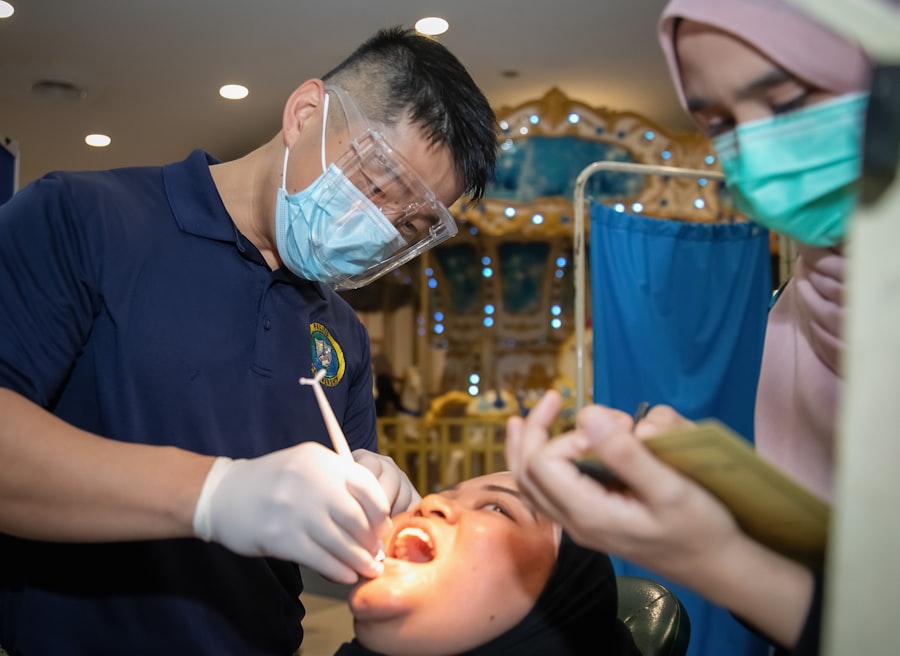In the competitive landscape of dental practices, effective marketing is not merely an option; it is a necessity. Dental marketing services play a crucial role in establishing a practice’s identity, attracting new patients, and retaining existing ones. With the rise of digital platforms, traditional marketing methods alone are no longer sufficient.
Practices must adapt to the evolving preferences of consumers who increasingly rely on online resources to make healthcare decisions. A well-crafted marketing strategy can significantly enhance a dental practice’s visibility, allowing it to stand out in a crowded marketplace. Moreover, dental marketing services encompass a wide range of strategies tailored to meet the unique needs of each practice.
From branding and website development to social media engagement and search engine optimization (SEO), these services are designed to create a cohesive and compelling narrative around a dental practice. By effectively communicating the value of their services, practices can build trust and credibility with potential patients. This trust is essential in healthcare, where patients often seek recommendations and reassurance before making decisions about their oral health.
Key Takeaways
- Effective dental marketing services are crucial for attracting and retaining patients.
- Understanding your target audience helps tailor marketing strategies to meet their needs.
- Building a strong online presence, including a professional website, enhances credibility.
- Utilizing social media and email marketing boosts patient engagement and communication.
- Implementing SEO and paid advertising increases visibility and drives quick results.
Understanding Your Target Audience
To craft an effective marketing strategy, it is imperative to have a deep understanding of the target audience. This involves identifying the demographics, preferences, and behaviors of potential patients. For instance, a family-oriented dental practice may focus on attracting parents with young children, while a cosmetic dentistry clinic might target adults seeking aesthetic enhancements.
Conducting market research through surveys, focus groups, or analyzing existing patient data can provide valuable insights into the needs and desires of the target audience. Additionally, understanding the pain points and motivations of potential patients can inform the messaging and services offered by the practice. For example, if research indicates that many patients are anxious about dental visits, marketing materials can emphasize a welcoming environment and gentle care techniques.
Tailoring marketing efforts to address specific concerns not only resonates with potential patients but also fosters a sense of connection and empathy, which can be pivotal in converting inquiries into appointments.
Creating a Strong Online Presence

In today’s digital age, a robust online presence is fundamental for any dental practice aiming to attract new patients. This begins with a professional website that serves as the cornerstone of the practice’s online identity. A well-designed website should be user-friendly, mobile-responsive, and optimized for search engines.
It should clearly outline the services offered, provide information about the dental team, and include patient testimonials to build credibility. Additionally, incorporating educational content such as blog posts or videos can position the practice as an authority in dental health while also improving SEO. Beyond the website, online directories and review platforms play a significant role in shaping a practice’s reputation.
Ensuring that the practice is listed accurately on platforms like Google My Business, Yelp, and Healthgrades can enhance visibility and facilitate patient engagement. Encouraging satisfied patients to leave positive reviews can further bolster the practice’s online reputation. In an era where consumers often consult online reviews before making healthcare decisions, maintaining a strong presence across various platforms is essential for attracting new patients.
Utilizing Social Media for Dental Marketing
| Metric | Description | Typical Value/Range | Importance for Dental Marketing |
|---|---|---|---|
| Engagement Rate | Percentage of audience interacting with posts (likes, comments, shares) | 1% – 5% | Measures how well content resonates with potential patients |
| Follower Growth Rate | Rate at which new followers are gained over time | 5% – 15% monthly | Indicates expanding reach and brand awareness |
| Click-Through Rate (CTR) | Percentage of users clicking on links in posts or ads | 0.5% – 3% | Shows effectiveness of call-to-action in driving website visits |
| Conversion Rate | Percentage of social media visitors who book appointments | 2% – 10% | Measures success in turning engagement into patients |
| Post Frequency | Number of posts published per week | 3 – 7 posts | Maintains consistent presence and audience interest |
| Response Time | Average time to respond to comments or messages | Within 1-2 hours | Enhances patient trust and satisfaction |
| Video Views | Number of views on video content | Varies widely; 500+ per video recommended | Engages audience with educational and promotional content |
| Hashtag Reach | Number of users reached through hashtags | Depends on hashtag popularity; 1,000+ ideal | Increases visibility beyond current followers |
Social media has emerged as a powerful tool for dental marketing, offering practices an opportunity to engage with their audience in real-time. Platforms such as Facebook, Instagram, and Twitter allow practices to share valuable content, promote special offers, and showcase their personality. By posting engaging visuals—such as before-and-after photos of treatments or behind-the-scenes glimpses of the practice—dentists can humanize their brand and foster a sense of community among current and potential patients.
Moreover, social media provides an avenue for direct interaction with patients. Responding promptly to comments and messages not only enhances patient satisfaction but also demonstrates that the practice values patient feedback. Additionally, running targeted ad campaigns on social media can help practices reach specific demographics based on location, interests, and behaviors.
This targeted approach ensures that marketing efforts are directed toward individuals who are more likely to seek dental services, thereby increasing the likelihood of conversion.
Implementing SEO Strategies for Increased Visibility
Search engine optimization (SEO) is a critical component of any dental marketing strategy aimed at increasing online visibility. By optimizing website content for relevant keywords—such as “family dentist in [location]” or “cosmetic dentistry near me”—practices can improve their rankings on search engine results pages (SERPs). This involves not only incorporating keywords into website copy but also optimizing meta tags, headers, and image alt text to enhance searchability.
In addition to on-page SEO tactics, local SEO is particularly important for dental practices. Claiming and optimizing Google My Business listings ensures that practices appear in local search results when potential patients are looking for dental services nearby. Encouraging satisfied patients to leave reviews on Google can also positively impact local search rankings.
Furthermore, creating localized content—such as blog posts about community events or partnerships with local organizations—can enhance relevance and authority in the eyes of search engines.
Leveraging Email Marketing for Patient Engagement

Email marketing remains one of the most effective channels for engaging with patients and nurturing relationships over time. By building an email list through sign-ups on the practice’s website or during patient visits, practices can communicate directly with their audience about promotions, new services, or educational content related to oral health. Personalized emails that address specific patient needs or milestones—such as reminders for upcoming appointments or follow-up care—can significantly enhance patient loyalty.
Additionally, email marketing allows practices to segment their audience based on various criteria such as treatment history or demographics. This segmentation enables targeted messaging that resonates with specific groups of patients. For instance, sending tailored content about pediatric dental care to parents or information about teeth whitening options to adults seeking cosmetic enhancements can lead to higher engagement rates and increased appointment bookings.
Utilizing Paid Advertising for Quick Results
While organic marketing strategies are essential for long-term growth, paid advertising can provide immediate visibility and results for dental practices looking to attract new patients quickly. Platforms such as Google Ads allow practices to create targeted ad campaigns that appear at the top of search results when potential patients search for relevant keywords. This pay-per-click (PPC) model ensures that practices only pay when users click on their ads, making it a cost-effective way to drive traffic to their websites.
Social media advertising also offers unique opportunities for dental practices to reach specific audiences based on interests and behaviors. For example, Facebook Ads can be tailored to target individuals within a certain geographic area who have shown interest in health and wellness topics. By creating compelling ad copy and eye-catching visuals that highlight special promotions or unique services, practices can capture the attention of potential patients who may not have otherwise discovered them through organic search.
Measuring and Analyzing the Success of Your Dental Marketing Campaigns
To ensure that dental marketing efforts are effective and yielding desired results, it is crucial to measure and analyze campaign performance regularly. Utilizing tools such as Google Analytics allows practices to track website traffic, user behavior, and conversion rates from various marketing channels. By analyzing this data, practices can identify which strategies are driving the most traffic and generating appointments.
Furthermore, tracking key performance indicators (KPIs) such as return on investment (ROI), patient acquisition cost (PAC), and patient retention rates provides valuable insights into the overall effectiveness of marketing campaigns. Regularly reviewing these metrics enables practices to make informed decisions about where to allocate resources and which strategies may need adjustment or enhancement. By continuously refining their marketing approach based on data-driven insights, dental practices can optimize their efforts for sustained growth and success in an ever-evolving marketplace.


